 Most viewed - MIE 三重県 Most viewed - MIE 三重県 |
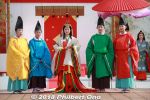
Posing with dancers called Maibito (舞人).26 views
|
|

The Higashiwakiden is only partially walled with an earthen floor, used as a waiting room or preparation room during ceremonies. 東脇殿26 views
|
|

About Saiku Heian-no-mori Park. Open 9:30 am to 5 pm (until 4 pm during Nov.–Feb.). The buildings are aso available for rent for private events.26 views
|
|
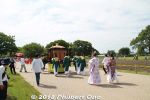
26 views
|
|

The Nyo-betto (女別当), who was the supervisor of the court ladies at special occasions such as the Saio procession, offer an iris flower.26 views
|
|

JR Seki Station building has a traditional design. It also houses a tourist information office and exhibition space. From Nagoya, it's about 26 views
|
|

26 views
|
|

26 views
|
|

Hyaku-rokuri-tei has a building with a view of Seki-juku. 百六里庭26 views
|
|

26 views
|
|

About Oi house26 views
|
|

Kaiunro, former geisha house in Seki-juku. 開雲楼26 views
|
|

Steps to Kameyama Castle's Tamon-yagura turret.26 views
|
|

View from Tamon-yagura turret.26 views
|
|
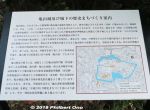
History of Kameyama Castle town.26 views
|
|

26 views
|
|

Way to Kameyama Castle's three-story turret site. 三重櫓跡26 views
|
|

Saiku government officials. 斎宮十二司官人25 views
|
|

Myobu (命婦) getting off the Seiden.25 views
|
|

The Saio princess wears a juni-hitoe (12-layer) robe reserved only for Imperial family members. 25 views
|
|

The departure ceremony included live gagaku sacred music and a Nara Period (8th century) sacred dance called Ranryo-o. (舞樂蘭陵王). 25 viewsGagaku music was performed by Kogakkan University's Gagaku club. It's a Shinto university in Ise. 皇學館大学 雅楽部
|
|

Saio Matsuri Departure Ceremony at Seiden Hall, Saiku Heian-no-mori Park. 正殿25 views
|
|

Saio princess gave a farewell speech.25 views
|
|

After the Departure Ceremony, the Saio exits showing her long, flowing black hair.25 views
|
|

On Nov. 3, 1968, Ise Jingu Shrine erected this stone monument in the Saio Woods to indicate that the Saiku Palace was located in this area.25 views斎王の森
|
|

Myobu (命婦), assistants who tend to the immediate needs of the Saio princess.25 views
|
|
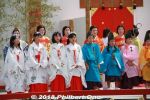
Girls called Warawame (童女). They are children of the Imperial family or nobility and are learning the customs of the Saiku while living in the Saiku Palace. 25 views
|
|

On this outdoor stage, they were to hold the Shato-no-Gi welcome ceremony at 2:50 pm when head honchos give speeches. 社頭の儀. This is the Saikuryo Government Director General. 斎宮寮長官25 views
|
|
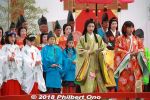
In green, Nyo-betto and the Child Saio princess.25 views
|
|
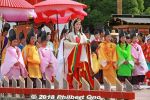
Saio posing with Warawame (童女) dressed in Heian-Period suikan costume. 水干25 views
|
|
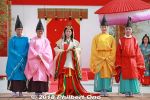
Posing with dancers called Maibito (舞人).25 views
|
|
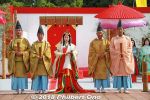
Saiku government officials. 斎宮十二司官人25 views
|
|
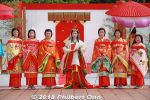
Posing with court ladies called Nyoju (女嬬) who serve in the inner palace (後宮) and take care of the Saio princess' daily living.25 views
|
|
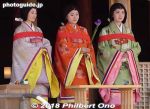
Iris flower offerings followed. Leading court ladies called the Myobu (命婦), assistants who tend to the immediate needs of the Saio princess. 献花の儀式25 views
|
|

25 views
|
|

Old coins and dishes/pottery.25 views
|
|

Traditional buildings that still remain in Seki-juku.25 views
|
|
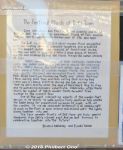
About Seki's float festival in English. This was posted on a nearby house.25 views
|
|

25 views
|
|

Tamaya inn 25 views
|
|

Tamaya entrance hall.25 views
|
|

Tamaya inn's front desk clerk.25 views
|
|

Antique shop sign.25 views
|
|

Jizo-in Temple, Main Hall is an Important Cultural Property. 地蔵院25 views
|
|

Jizo-in Temple, Main Hall25 views
|
|

Kameyama Castle's Tamon-yagura turret.25 views
|
|

Next to the castle is a stone monument marking the birthplace of Iinuma Yokusai (1782–1865), a Japanese botanist and physician. 飯沼慾斎25 views
|
|

Kameyama Castle's Tamon-yagura turret in autumn. 多聞櫓25 views
|
|

Kameyama Castle's Tamon-yagura turret. 多聞櫓25 views
|
|

25 views
|
|

Steps to Kameyama Castle's Tamon-yagura turret. It was renovated in 2012. 多聞櫓25 views
|
|
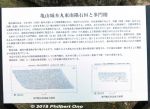
Stone wall design under Tamon-yagura turret. 25 views
|
|

Tamon-yagura turret.25 views
|
|

Ninomaru fringe.25 views
|
|

25 views
|
|

JR Kameyama Station (Kansai Line).25 views
|
|

In front of JR Kameyama Station.25 views
|
|

Palanquins for the Saio (middle), Nyo-betto, and Child Saio standby for the procession. The orignal palanquins had no wheels.24 views
|
|

Saio Matsuri banners were put up by local jr. high students.24 views
|
|

Patch of trees are the Saio Woods where the Saiku Palace was supposedly located. 斎王の森24 views
|
|

In the Saio Woods, Historic Site marker for the Saiku Palace. The Saiku Palace was constructed anew for each new Saio. 斎王の森24 views
|
|

The Saio Gunko Procession started at around 2 pm.24 views
|
|

24 views
|
|

Nyoju (女嬬) followed by Warawame (童女) daughters of the Imperial family or nobility.24 views
|
|

In front of the Saio princess palanquin are girls are called Warawame (童女). They are daughters of the Imperial family or nobility and are learning the customs of the Saiku while living in the Saiku Palace. They wear chihaya costume. 千早24 views
|
|

Court lady called the Uneme (釆女) chosen from an aristocratic family and who was in charge of food and drink.24 views
|
|

High-ranking court ladies called Uneme (釆女) chosen from an aristocratic family. They were in charge of food and drink for the princess.24 views
|
|
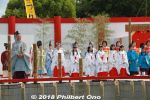
They started gathering on the outdoor stage near the Saiku Historical Museum.24 views
|
|
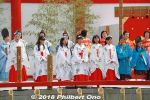
Girls called Warawame (童女) wearing chihaya costume 千早. They are daughters of the Imperial family or nobility and are learning the customs of the Saiku while living in the Saiku Palace. 24 views
|
|

Almost an hour later, the procession arrived at this park with this outdoor stage for the welcome ceremony. The Saio arrived.24 views
|
|
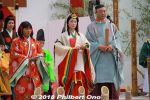
24 views
|
|

Before the Saio moves or poses, her attendants arrange her juni-hitoe kimono.24 views
|
|

Posing with Saio palanquin bearers called Kayocho (駕輿丁) who were chosen from the best gentlemen.24 views
|
|

The Nishiwakiden is thought to be an auxiliary to the Seiden and used for rituals and banquets. 西脇殿24 views
|
|

Inside Itsuki Chaya rest house and gift shop. Posters of past Saio in past Saio Festivals. いつき茶屋24 views
|
|

Ryoko storehouses of the Saikuryo government.24 views
|
|

An outdoor 1/10-scale model of the Saiku Palace site (700 m x 2 km) was created near the Saio Woods. It had a grid layout of blocks as shown here. The site included buildings for the Saikuryo Government that govenred the Saiku Palace.24 viewsKnown blocks are labeled like here. The trees in the background in this photo shows the Saio Woods where the princess lived.
|
|

About the Nai-in, the living quarters of the Saio princess. 内院24 views
|
|

The Saiku area is a Japan Heritage site and this Ise road has been renovated.24 views
|
|

Saiku Station on the Kintetsu Yamada Line.24 views
|
|
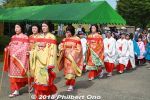
Court ladies called Nyoju (女嬬). 24 views
|
|
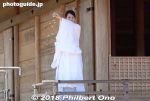
The Departure Ceremony started with a purification ritual called "Kiyone no Gishiki." A woman at two corners of the Seiden sprinkled confetti. 清めの儀式24 views
|
|

Lots of wooden lattice on the exterior, used to block rain and wind.24 views
|
|

24 views
|
|

Entering the Seki Townscape Museum.24 views
|
|

Stairway to 2nd floor.24 views
|
|

Charcoal heater.24 views
|
|

Tokonoma alcove.24 views
|
|

Old map of Seki-juku.24 views
|
|

Exhibition room of photos of Seki-juku's skyline.24 views
|
|

24 views
|
|

Festival float storehouse or dashi-gura. One of four remaining today. Originally there were 16 floats. There's a window where you can see part of the Nakamachi Sanbancho float inside.24 views
|
|

Seki-juku's traditional townscape continues.24 views
|
|

24 views
|
|

24 views
|
|

24 views
|
|

24 views
|
|

Ito Honjin lodge was Seki-juku's high-class lodge for VIP travelers like daimyo lords. 伊藤本陣跡24 views
|
|
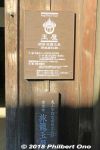
Tamaya inn adult admission ¥300. Must see. 旅籠玉屋歴史資料館24 views
|
|

Tamaya kitchen24 views
|
|
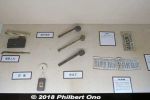
24 views
|
|

This might be the maid's room.24 views
|
|

24 views
|
|

Seki-juku post office (modern).24 views
|
|

24 views
|
|

Fukuzoji Temple gate. 福蔵寺24 views
|
|

Jizo-in Temple's bell tower is also an Important Cultural Property.24 views
|
|

Jizo-in Temple's Jizo statue.24 views
|
|

Inns in front of Jizo-in Temple.24 views
|
|

Aizu-ya inn in front of Jizo-in Temple. 会津屋24 views
|
|

24 views
|
|

Hyakugo Bank, Seki Branch 百五銀行 関支店24 views
|
|

24 views
|
|

Tokaido Road marker.24 views
|
|

24 views
|
|

JR Tsuge Station connects to the JR Kusatsu Line.24 views
|
|

Kameyama Castle's Tamon-yagura turret on a high stone wall. One of the few remnants remaining. Most of the castle was dismantled by the Meiji government in 1873.24 views
|
|

Kameyama Castle's Tamon-yagura turret. 多聞櫓24 views
|
|

Castle well.24 views
|
|

Kameyama Castle well.24 views
|
|

24 views
|
|

Emperor Meiji once stayed in this home that was moved here.24 views
|
|

24 views
|
|

24 views
|
|

24 views
|
|

24 views
|
|

Kameyama Castle's three-story turret site.24 views
|
|

Kameyama Castle's three-story turret site.24 views
|
|
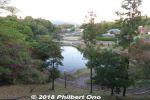
24 views
|
|

24 views
|
|
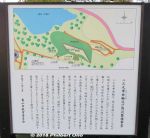
About the Ninomaru keep's fringe.24 views
|
|

24 views
|
|

Ninomaru fringe walls were reconstructed.24 views
|
|

24 views
|
|

24 views
|
|

24 views
|
|

Pillar foundation stone.24 views
|
|

About the pillar foundation stone.24 views
|
|

Part of the Honmaru castle grounds now occupied by Kameyama Nishi Elementary School.24 views
|
|

Stema locomotive in the Ninomaru area.24 views
|
|

24 views
|
|

Top-ranking court ladies called the Naishi (内侍) working at the Saiku Palace.23 views
|
|

Top-ranking court ladies called the Naishi (内侍) working at the Saiku Palace.23 viewsIn green is the Onna Betto (or Nyo-betto) (女別当) who was the supervisor of the court ladies at special occasions such as the Saio procession.
|
|

Ladies wearing a red band across their shoulders are court ladies called Nyoju (女嬬) who serve in the inner palace (後宮) and take care of the Saio princess' daily living.23 views
|
|

Naishi (内侍) coordinator of court ladies in Saiku Palace. They have a fancy umbrella bearer called furyu-gasa. 風流傘23 views
|
|

Naishi (内侍) coordinator of court ladies in Saiku Palace. She has a fancy umbrella bearer called furyu-gasa. 風流傘23 views
|
|

The procession walked through a lawn of food stalls and headed for the outdoor stage. This is near the Saiku History Museum.23 views
|
|

23 views
|
|
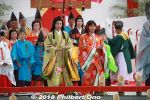
In green is the Onna Betto (or Nyo-betto) (女別当) who was the supervisor of the court ladies at special occasions such as the Saio procession. 23 views
|
|
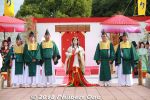
Posing with Saio palanquin bearers called Kayocho (駕輿丁) who were chosen from the best gentlemen.23 views
|
|

Posing with Saio palanquin bearers called Kayocho (駕輿丁) who were chosen from the best gentlemen.23 views
|
|

The actual road where the Saio princess traveled to Ise Grand Shrines. Called "Kodai Ise-do" (Ancient Ise Road). 古代伊勢道23 views
|
|

They also have a scale model of the palace with many buildings over a wide area.23 views
|
|

The Nai-in block was enclosed by a pillared fence. 内院23 views
|
|

Saiku Station on the Kintetsu Yamada Line which is the same train line that goes on to Ise-shi (Ise Grand Shrines) and Toba Station (Mikimoto Pearl Island).23 views
|
|

Saiku Station on the Kintetsu Yamada Line.23 views
|
|
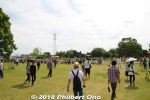
As the Saio procession went through the park, the crowd followed. 上園芝生広場23 views
|
|
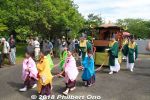
Aristocratic boys wearing a Heian-Period suikan costume. 童男人形「水干」23 views
|
|

Seki-juku stretches for about 1.8 km. The whole town is small enough to walk through. 23 viewsA few buildings are open to the public as museums. Seki-juku is also a National Important Traditional Townscape Preservation District (重要伝統的建造物群保存地区). Short walk from JR Seki Station on the JR Kansai Main Line.
|
|

From Seki Station, a short walk on this road to Seki-juku.23 views
|
|

23 views
|
|

Money box, probably a safe.23 views
|
|

Stairway also serve as storage space.23 views
|
|

Room on 2nd floor.23 views
|
|

Another small exhibition room.23 views
|
|
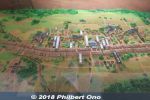
Scale model of Seki-juku.23 views
|
|

Old bicycle from the late 19th century (Meiji Period). Still a rare luxury item in those days. Bicycles became widely used in Japan from the 1930s. This bicycle was donated by a local resident in Seki. 23 views
|
|

About Seki's festival floats.23 views
|
|

23 views
|
|

23 views
|
|

View from Chokantei, looking toward Jizo-in Temple. 眺関亭からの眺望23 views
|
|

23 views
|
|

23 views
|
|

Old koto and skis in Ishigaki-ya.23 views
|
|

Tamaya inn is another major museum in Seki-juku. 旅籠玉屋歴史資料館23 views
|
|

Seki-juku had 42 inns including two Honjin and two Waki-Honjin.23 views
|
|

Tamaya inn's front desk.23 views
|
|

Abasuc.23 views
|
|

Tamaya kitchen stove.23 views
|
|

Sake flasks and delivery box.23 views
|
|

Tamaya courtyard.23 views
|
|

23 views
|
|

Ceiling of the kura storehouse.23 views
|
|
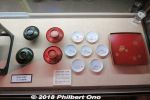
Tableware used by Tamaya when it was an inn.23 views
|
|

About the Seki-juku bulletin board used by officials to give official notices to people in Seki-juku. 高札場23 views
|
|

23 views
|
|

23 views
|
|

23 views
|
|

Inside Jizo-in Temple, Main Hall.23 views
|
|

23 views
|
|

23 views
|
|

Hyakugo Bank, Seki Branch is a modern building designed in the traditional style. 百五銀行 関支店23 views
|
|

23 views
|
|

Oi house23 views
|
|

More latticed walls in Seki-juku.23 views
|
|

JR Seki Station on the Kansai Line. JR関西本線 関駅23 views
|
|

Saiku government officials. 斎宮十二司官人23 views
|
|

When you walk from JR Kameyama Station to the castle, you will first see this large athletic field (baseball, etc.) and a stone wall and turret. The field was the Honmaru.23 views
|
|

Kameyama Castle's Tamon-yagura turret. 多聞櫓23 views
|
|

Tamon-yagura turret.23 views
|
|

Lodging for Emperor Meiji when he passed through Kameyama in 1880.23 views
|
|

Kameyama Enbujo 亀山演武場23 views
|
|
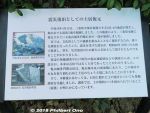
About the reconstructed stone foundation.23 views
|
|

Kameyama Shrine is dedicated to samurai Minamoto Yoshiie and many other deities. 亀山神社23 views
|
|

23 views
|
|

23 views
|
|

23 views
|
|
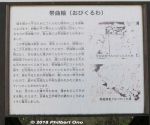
23 views
|
|

23 views
|
|
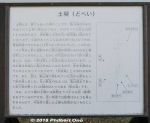
23 views
|
|

Part of the Honmaru castle grounds now occupied by Kameyama Nishi Elementary School.23 views
|
|

Masumi Children's Park ますみ児童園23 views
|
|

JR Kameyama Station platform.23 views
|
|
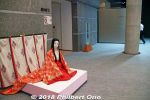
Museum greeter (non-human).22 views
|
|
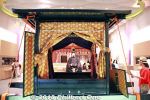
Saio princess palanquin called "Sokaren." 斎王の神輿「葱華輦」22 views
|
|

22 views
|
|

The first palanquin carries the Nyo-betto (女別当), the supervisor of the court ladies.22 views
|
|

22 views
|
|

Posing with Meiwa's mascot Mei-hime. めい姫22 views
|
|

Itsuki Chaya rest house and gift shop. いつき茶屋22 views
|
|

The Saiku was a lost palace and its exact location was unknown until 1970 when the land here was being prepared for a housing project. Ancient pottery pieces and remains of building foundations were unearthed.22 viewsIn fact, local residents for generations had passed down the story of the palace being located here. In 1903, a local group led by the Saiku village headman erected this stone monument from recognize Saiku as the palace site. It wasn't until June 1970 when remains of the Saiku Palace were found in Meiwa.
|
|

22 views
|
|

Shinden shrine buildings for religious services.22 views
|
|

The Saiku area is a Japan Heritage site.22 views
|
|

22 views
|
|

Entrance to Seki Machinami Shiryokan (Seki Townscape Museum). It looks narrow, but the building is quite long. 関まちなみ資料館22 views
|
|

22 views
|
|

About the Ito Honjin lodge.22 views
|
|

About the Kawa-kita Honjin lodge. 22 views
|
|

Small exhibition room on 2nd floor (or maybe attic).22 views
|
|

22 views
|
|
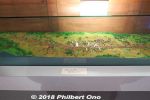
Scale model of Seki-juku.22 views
|
|

How Seki-juku started out. The town was named "Seki" in the early 18th century.22 views
|
|

Kitchen stove.22 views
|
|

Indoor well.22 views
|
|
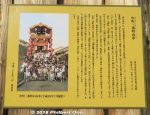
About the Nakamachi Sanbancho float festival float. The Seki Hikiyama Festival is held on a weekend in late July.22 views
|
|

Tanaka-ya coffee shop.22 views
|
|

22 views
|
|

Tsuruya inn. 鶴屋脇本陣跡22 views
|
|

Hyaku-rokuri-tei22 views
|
|

View from Chokantei. 眺関亭からの眺望22 views
|
|

22 views
|
|

View from Chokantei. 眺関亭からの眺望22 views
|
|

Ishigaki-ya inn. It's actually an inn where you can stay. ¥2,500/night.22 views
|
|

Ishigaki-ya22 views
|
|

Tamaya inn is another major museum in Seki-juku. 旅籠玉屋歴史資料館22 views
|
|

About the three types of inns in stage towns.22 views
|
|

Tamaya inn's front desk.22 views
|
|

Tamaya kitchen stove.22 views
|
|

Tamaya kitchen stove.22 views
|
|

Tamaya has many rooms with exhibits.22 views
|
|

Tamaya tokonoma alcove.22 views
|
|
| 1114 files on 5 page(s) |
 |
 |
4 |
|